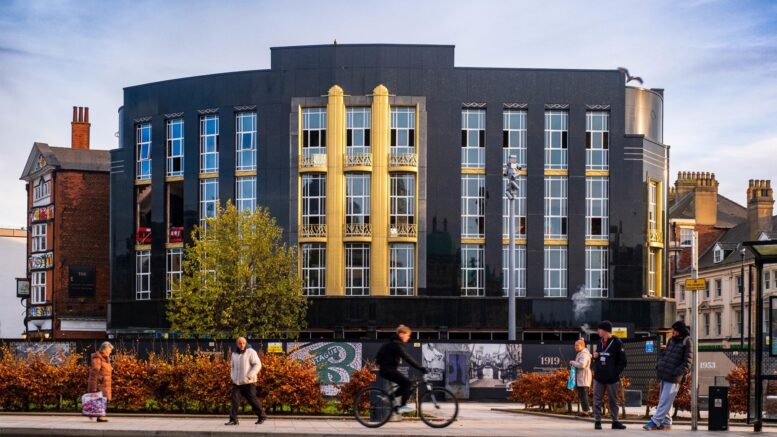Regeneration of Hull’s historic Burton building by specialist Wykeland Group has taken a major step forward with removal of scaffolding from the art deco building.
The building, now called Burton House, will ultimately offer 12,700 sq ft of city centre space, set over five floors.
Central to the restoration of Burton House is the replacement of much of the granite cladding which adorns the building. Replacement granite has been sourced from the same quarry in Norway, matching the geographical origin of the original stone.
Jonathan Stubbs, development director at Wykeland, said: “There has, unsurprisingly, been a huge amount of excitement and anticipation surrounding the regeneration of the Burton building. As one of the best-known landmarks in Hull, we’ve approached this project with a great deal of care and sympathy.
“With the scaffolding now removed and the restored exterior of the building revealed, people can envisage how Burton House will transform the entrance to Whitefriargate.
“As the project has progressed, we have had growing levels of interest from potential leisure and retail occupiers of the ground floor and basement accommodation, looking to make the most of this rare opportunity to move into a prime, regenerated city centre space. We expect that demand will further intensify now people can see the quality of the restoration we are carrying out.”
The building’s art deco windows have also been replaced, with new signage to be installed.
Restoration of Burton House is the latest significant city centre regeneration project led by Wykeland.
Wykeland is also currently restoring Hull’s Castle Buildings and reinstating the former Earl De Grey pub, in a £2m project to bring another landmark site back into use.



